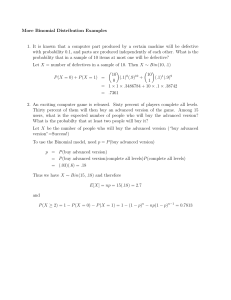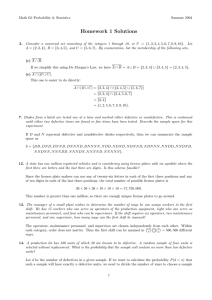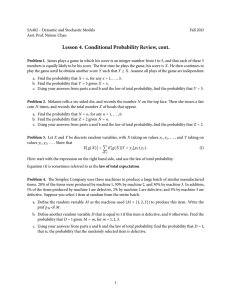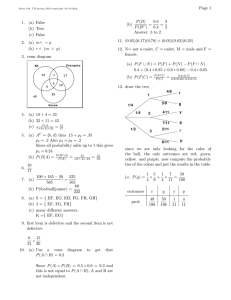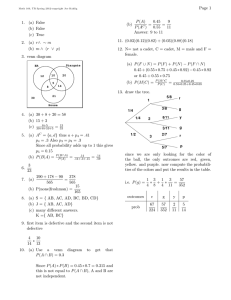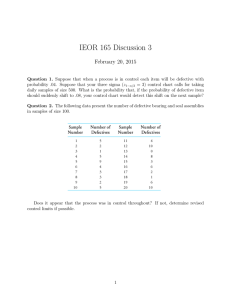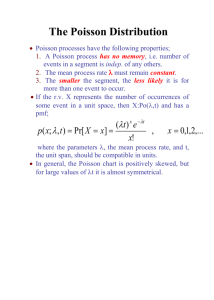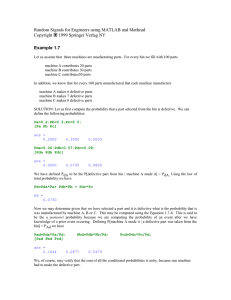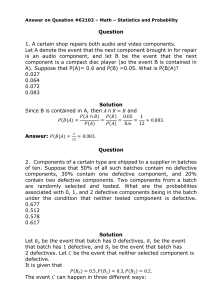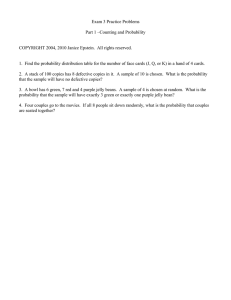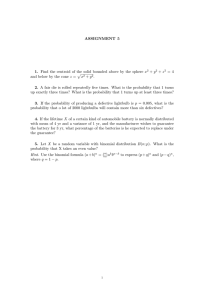MA22S6 Homework 3 Solutions • Question 1
advertisement
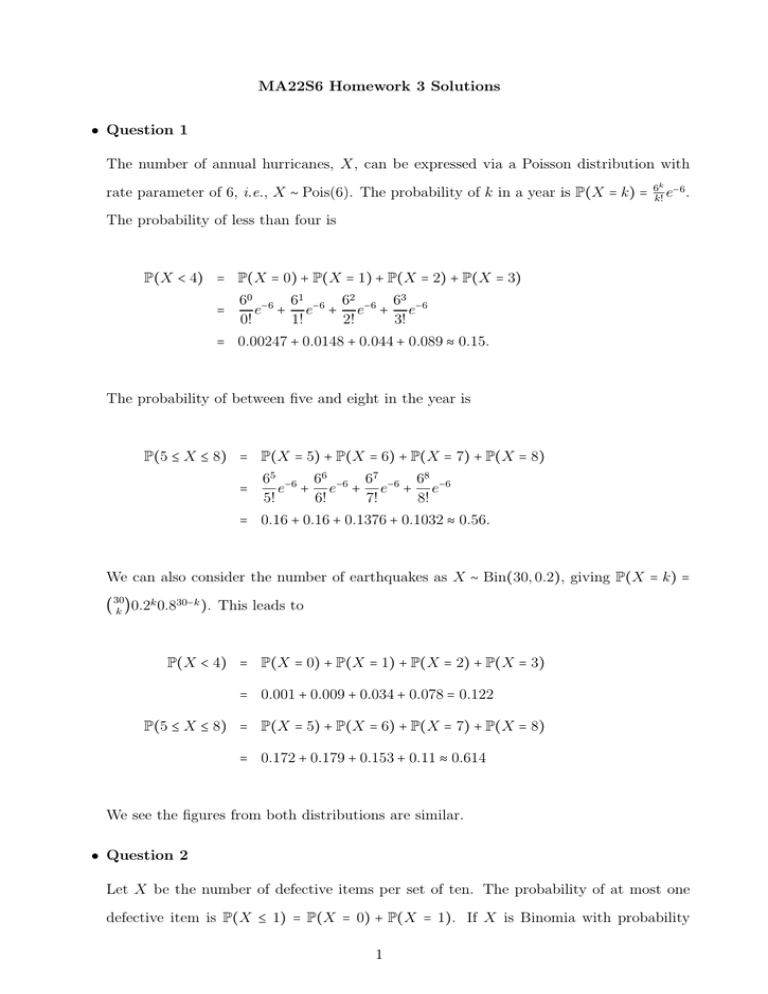
MA22S6 Homework 3 Solutions • Question 1 The number of annual hurricanes, X, can be expressed via a Poisson distribution with rate parameter of 6, i.e., X ∼ Pois(6). The probability of k in a year is P(X = k) = 6k −6 k! e . The probability of less than four is P(X < 4) = P(X = 0) + P(X = 1) + P(X = 2) + P(X = 3) = 60 −6 61 −6 62 −6 63 −6 e + e + e + e 0! 1! 2! 3! = 0.00247 + 0.0148 + 0.044 + 0.089 ≈ 0.15. The probability of between five and eight in the year is P(5 ≤ X ≤ 8) = P(X = 5) + P(X = 6) + P(X = 7) + P(X = 8) = 65 −6 66 −6 67 −6 68 −6 e + e + e + e 5! 6! 7! 8! = 0.16 + 0.16 + 0.1376 + 0.1032 ≈ 0.56. We can also consider the number of earthquakes as X ∼ Bin(30, 0.2), giving P(X = k) = (30 )0.2k 0.830−k ). This leads to k P(X < 4) = P(X = 0) + P(X = 1) + P(X = 2) + P(X = 3) = 0.001 + 0.009 + 0.034 + 0.078 = 0.122 P(5 ≤ X ≤ 8) = P(X = 5) + P(X = 6) + P(X = 7) + P(X = 8) = 0.172 + 0.179 + 0.153 + 0.11 ≈ 0.614 We see the figures from both distributions are similar. • Question 2 Let X be the number of defective items per set of ten. The probability of at most one defective item is P(X ≤ 1) = P(X = 0) + P(X = 1). If X is Binomia with probability 1 0.1 of an item being defective, i.e., X ∼ Bin(10, 0.1),, the probability of k defectives is )(0.1)k (0.9)10−k , yielding P(X = k) = (10 k P(X ≥ 1) = P(X = 0) + P(X = 1) 10 10 = ( )(0.1)0 (0.9)10 + ( )(0.1)1 (0.9)9 0 1 = 0.3486 + 0.3874 ≈ 0.736. We can think of the occurence of defectives as Poisson with a rate of λ = 1 per 10 items, i.e., X ∼ Pois(1). The probability of k items being defective is P(X = k) = 1k −1 k! e , giving P(X ≥ 1) = P(X = 0) + P(X = 1) = 10 −1 11 −1 e + e 0! 1! = 0.367 + 0.367 ≈ 0.734. These two figures are very similar. • Question 3 X ∼ Bin(8, 0.2) implies the probability of k successes in 8 trials is P(X = k) = (k8)(0.2)k (0.8)8−k . Calculating P(X = k) for k = 0, 1, . . . , 8 and plotting against k gives Writing λ = np = 8(0.2) = 1.6 we can also say X ∼ Pois(1.6) giving We see both plots are very similar. 2 • Question 4 The cumulative density function of the uniform distribution on [a, b] (the probability of a value less than k) is P(X < k) = k−a b−a . The probability of an outcome exceeded a particular value is P(X > k) = 1 − P(X < k) = 1 − P(X < 99) = 99−98.5 99.5−98.5 = 0.5 and P(X > 99.4) = k−a b−a 99.5−99.4 99.5−98.5 = b−k b−a . From these identities we see = 0.1. The probability of a value of 99 is zero, as the uniform distribution is continuous (i.e., can take an infinite amount of values). 3
